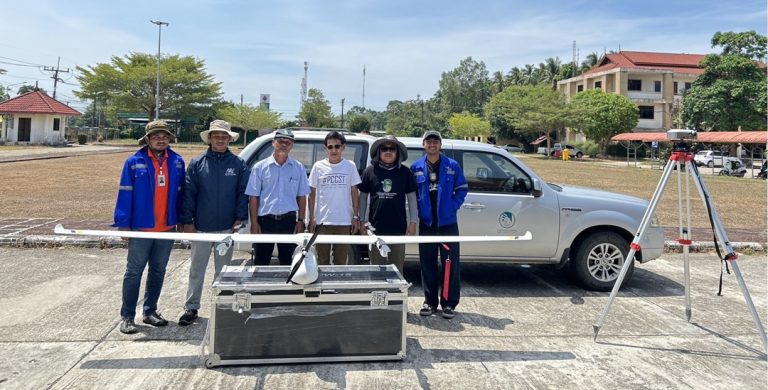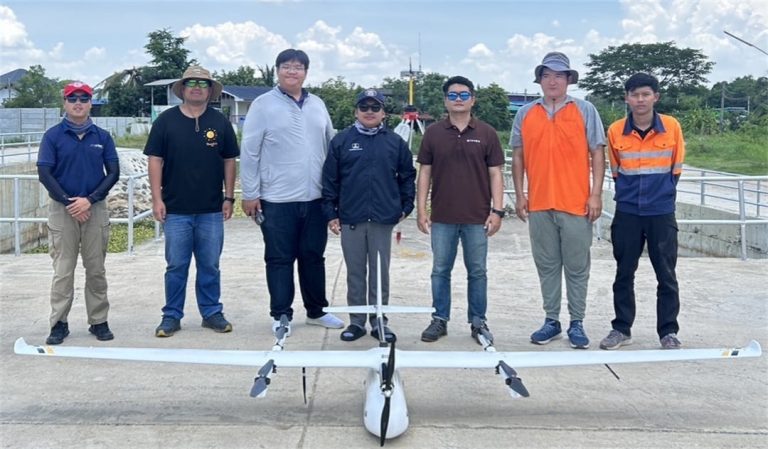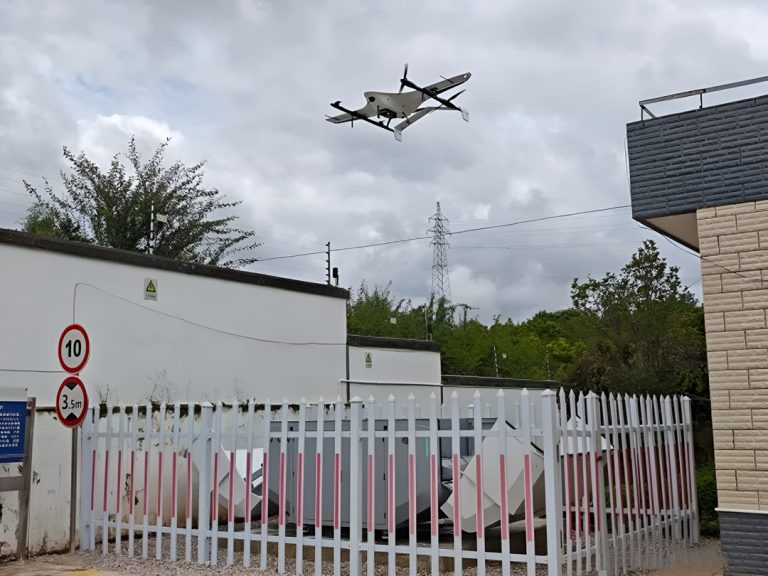RTK vs. PPK Drone Mapping: What’s the Difference?
Did you know that there are positioning methods that can help GPS systems be more accurate in drone surveys? This is RTK (Real Time Kinematics) and PPK (Post-Processing Kinematics) technology.
Commercial drones use GPS units and compasses. However, the accuracy provided by these devices may vary widely depending on weather conditions, terrain, the quality of the device itself, or other conditions. Even under the best of conditions, GPS drone systems provide positioning accuracy in meters.
Therefore, more in-depth technologies such as RTK and PPK are needed, which can correct common errors of satellite navigation (GNSS) systems to improve the accuracy of surveyed and mapped data.
Are you curious to know what this RTK drone is and how it works? Want to know what the difference is between RTK and PPK? Check out how it can work in your project in the following content.
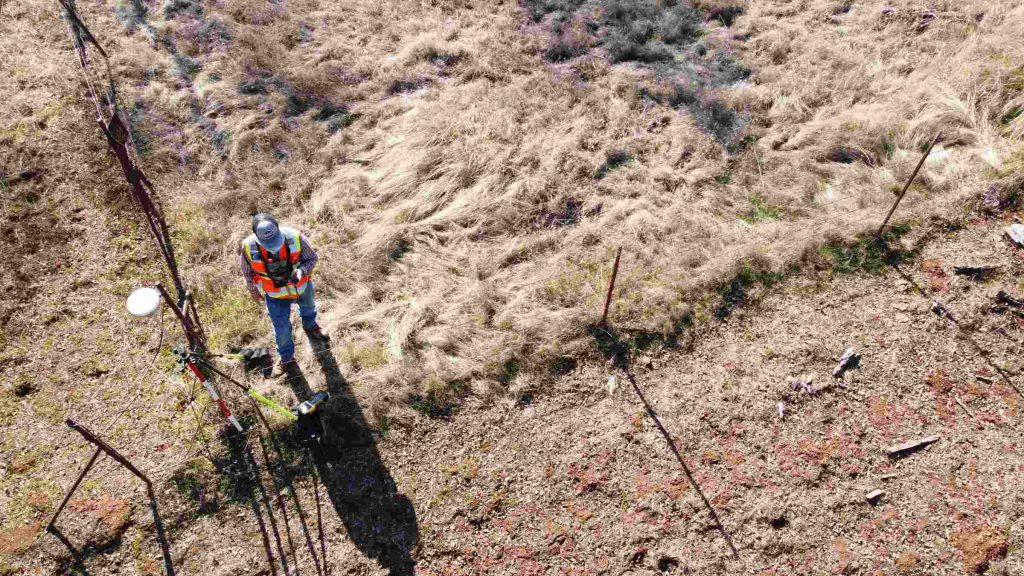
What is an RTK on a drone?
RTK stands for Real Time Kinematics. As a positioning and navigation system, RTK corrects GPS position data in real time as the drone flies over and surveys the selected area.
This technology is also commonly known as DGPS (carrier phase correction) when referring to the particular use of the GPS network.
RTK positioning is similar to a total station radial measurement, with a reference station providing real-time correction to centimeter accuracy.
Likewise, it does not require post-processing of the data to obtain a position solution, which makes real-time topographic surveys possible in the field.
How does an RTK drone work?
RTK GPS drones have an onboard GNSS RTK receiver that collects data from satellites while flying and taking photos. The field GNSS base station located at a known point or connected to a CORS network needs to accurately mark the location of the image in real time.
During the RTK workflow, seamless communication between the drone and the GNSS base station is required.
When the drone lands, absolute accuracy data is available for processing in your mapping software if all signals are constant.
The RTK method is suitable for flat terrain where trees or mountains do not obstruct the communication signal. It is ideal for RTK drones to fly over open terrain within 2 to 3 kilometers of a field base station or within 30 kilometers of a CORS station. If you already have access to your own base station, this can be used with an RTK drone as long as your base station has the ability to generate NTRIP data.
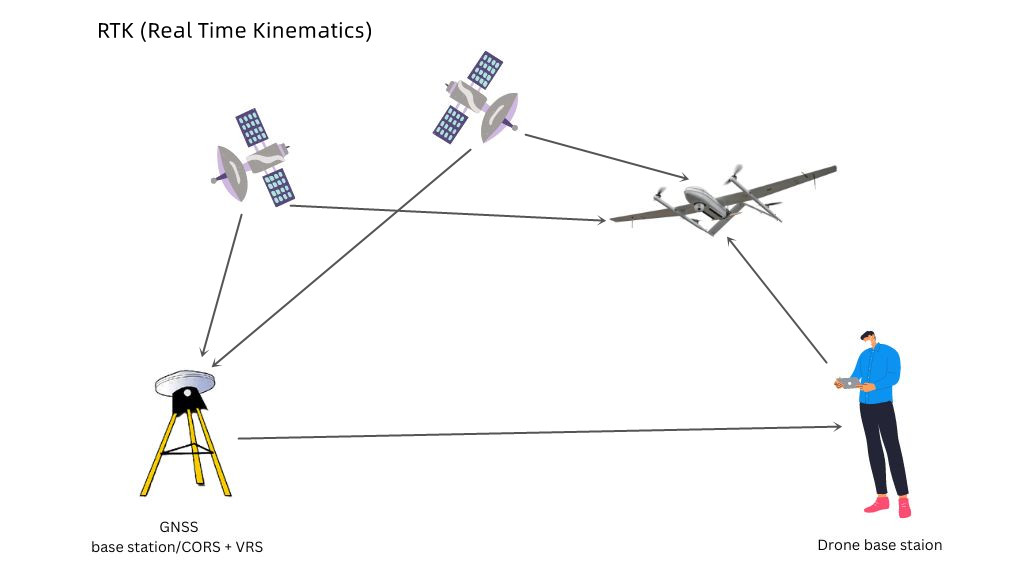
How accurate are RTK drones?
RTK drone positioning relies mainly on information broadcast from satellites and a ground-based receiver. With these two systems combined, you can expect to achieve an accuracy range of up to 1 cm + 2 ppm in the horizontal direction. When you measure vertically, this rate tends to double.
Advantages and disadvantages of RTK drones
The main benefit of using RTK drones is the accuracy of the aircraft in flight. RTK corrects geographic coordinates in real time during a flight, which allows the drone to hover accurately even in high winds. Thanks to accurate position information, the drone can fly in confined spaces and very close to objects, thus capturing clearer photos.
In addition to centimeter-level accuracy, RTK allows drones to avoid radio frequency (RF) and electromagnetic field (EMF) interference. When drones are too close to power lines, radio towers, or large metal structures, they can receive these interferences. In this case, the drones can go into ATTI mode, causing them to be lost or crash.
RTK survey also enables precise geotagging of images and videos captured by drones for future analysis and use by surveyors. Clearly, drones with RTK can provide valuable benefits to business users.
However, RTK GPS drones need a constant and stable link. This means that if the drone is flying in an ocean area, in an obstructed area (trees, mountains, etc.), or in a large area, a power loss can occur and the signal can be corrupted. A loss of signal can then lead to a loss of calibration data and potentially inaccurate gaps during flight.
What is PPK in drones and how does it work?
PPK (Post-Processing Kinematics) precise positioning technology does not perform GPS position correction in real time during the drone flight, but at the end of the flight.
In the PPK workflow, the base station and rover units record GNSS raw data without any calculations. The collected data are stored in the measurement controller or receiver until the end of the fieldwork. These data are then processed with software and the corrections are applied to the data.
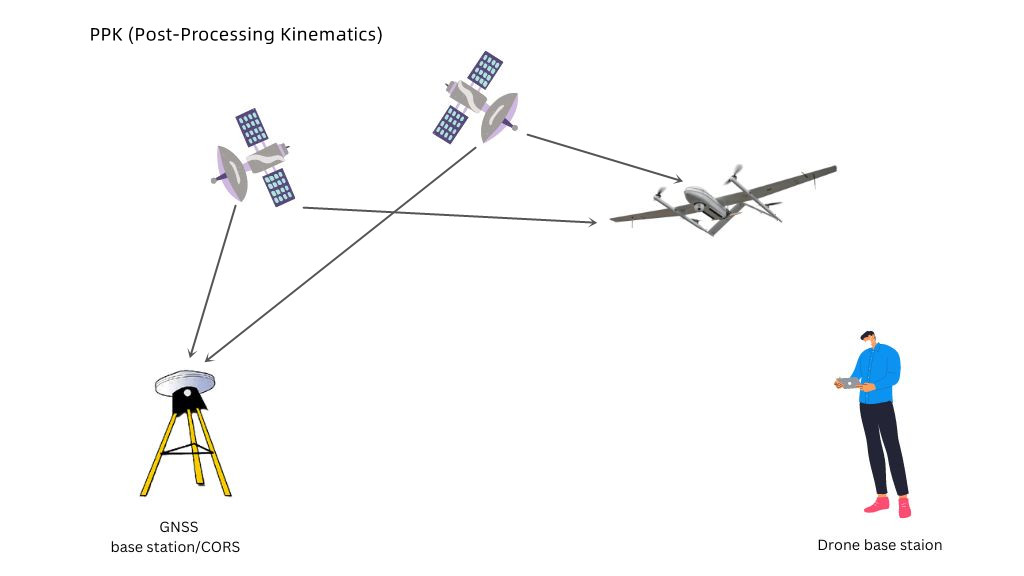
What's the difference between RTK and PPK?
PPK is another GPS correction technique that is becoming increasingly popular similar to RTK. both RTK and PPK allow users to accurately locate the position of a UAV without relying on measuring ground targets. However, there are significant differences between these two mapping technologies in terms of workflow, accuracy, etc. Let's have a look in detail:
The two techniques are very similar, however, PPK has a decisive advantage, because of its robustness and high accuracy.
Position correction occurs at different times
Basically, the main difference between RTK and PPK is the time it takes for the position correction to occur. RTK makes the correction during the flight, which saves time in post-processing, and you can see the coordinates and accuracy of the measurement points on the mobile station. But PPK is corrected after the flight, so you can't see the coordinates in the field.
PPK is more accurate
Ideally, the accuracy of PPK is the same as that of RTK. However, RTK requires real-time corrections to its base point, which is done through the data chain, which can be affected by momentary interruptions. On top of that, you have to add possible problems or errors due to improperly parked bases that can make your position off or inconsistent.
In contrast, PPK is a more robust and accurate solution because it does not rely on a continuous data chain. In addition, field commissioning is faster because you don't necessarily need to know our position from the base before the flight; it can be done after the flight. There is no onboard data to receive, compare and calibrate, which greatly reduces the performance latency of the UAV and thus increases accuracy.
PPK drones offer users greater flexibility
To perform at its best, an RTK drone must follow a pre-planned flight path that is optimized to make it easier for the photogrammetry software to complete its work as quickly as possible. Since the data stitching of PPK drones is done after the flight, they are not limited to any particular flight path, giving them the freedom to collect photographic data and allowing the pilot to map the area to his satisfaction.
PPK has a larger working radius
GPS RTK work is restricted by the communication station, and the working distance is generally not more than 10km. Using the PPK technology, the general working radius can reach 50km.
Conclusion
Both RTK and PPK positioning can reach centimeter accuracy. However, the downside of RTK positioning lies in its reliance on a data link that allows real-time corrections to the drone's GPS position to be performed.
The non-dependence of PPK positioning on any data link with the ground station makes it a more robust GPS correction technique. Therefore, whenever possible, it will be preferable to use PPK positioning rather than RTK.
Only in very specific situations where time is a determining factor (such as immediate topographic surveys in areas that have just suffered a natural disaster) may RTK positioning be preferable over PPK.
What can you do with RTK drones?
RTK GPS drones are used in a variety of applications to make things easier and more efficient. Here are 4 common applications of RTK drones:
Public safety
Drones with RTK are becoming critical tools for public safety agencies and law enforcement. These public safety drones can help identify and track fugitives or missing persons by providing highly accurate location data in real time like the operator. Fire departments can use drones in large-scale disasters to understand the situation and reduce the risk of firefighters being put at unnecessary risk.

Agriculture
RTK drones play an inaccessible role in vegetation mapping, geological surveys, and agricultural inspections. RTK drones provide accurate location data to enable farmers to determine where to most effectively sow crops and determine the best location for drainage and irrigation systems. RTK can also help self-driving tractors and other precision farming systems operate in the field without requiring farmers to be in the cab.
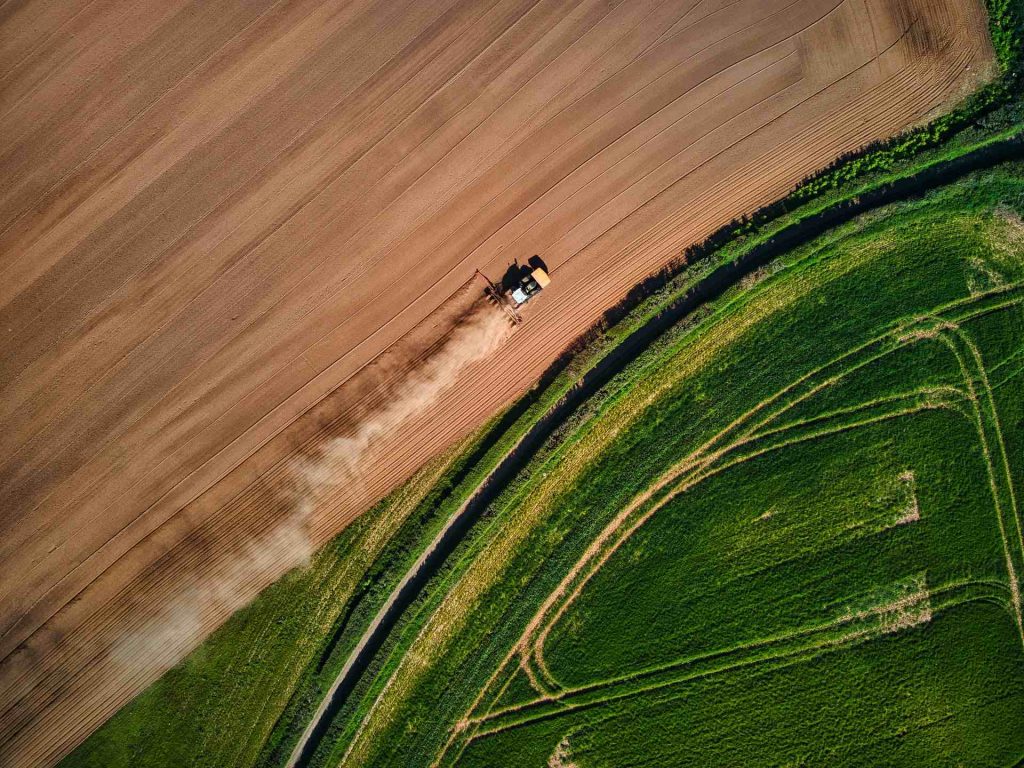
Surveying/mapping
RTK drones have become an essential tool for land mapping, as they record GPS information and geotag images during flight. Even in bad weather and treacherous alpine areas, RTK drones can accurately measure and map the world's most remote locations without placing surveyors in danger.
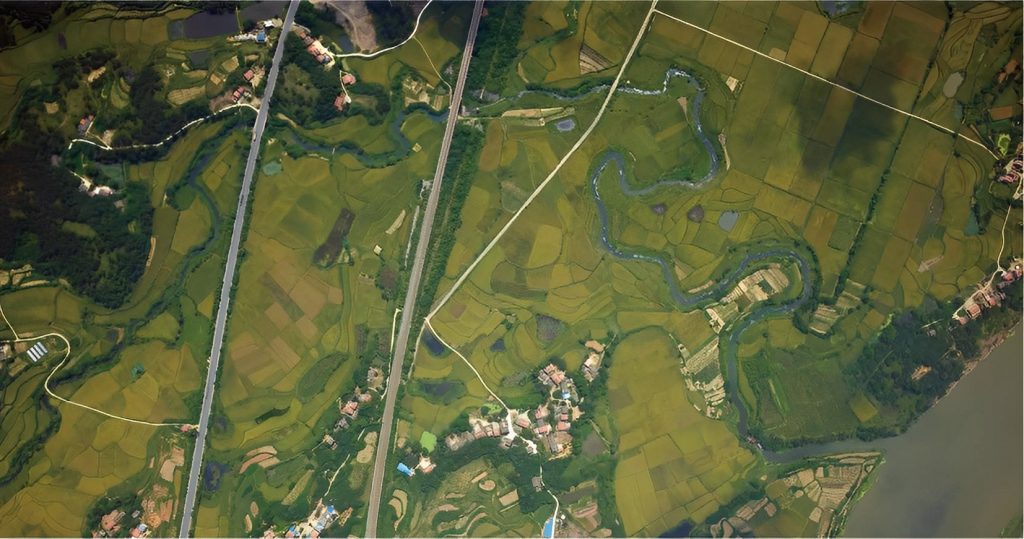
Inspection
Adding RTK technology to drone inspections helps make remote operations inspections safer and easier. RTK drones can provide remote inspectors with real-time, precise location data, enabling them to quickly and accurately locate possible defects in facility equipment. This helps maintenance work proceed efficiently and prevents potentially catastrophic failures from occurring.
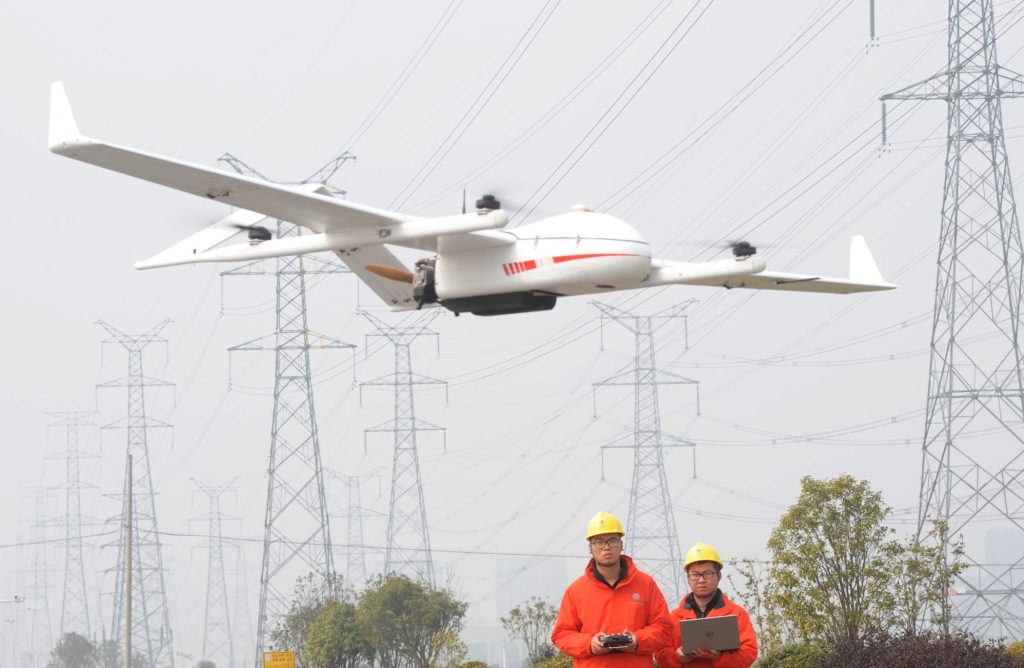
Best RTK drones for sale
The JOUAV CW Series VTOL drones deserve the best survey drones that combine RTK with PPK. The RTK technology is used for precise takeoff and landing while the PPK module allows them to efficiently gather centimeter-level accurate data results. Therefore, these drones achieve the best-in-class absolute down to 1 cm and a GSD of down to 5-8mm per pixel.
The JOUAV CW Series drones is a vertical takeoff and landing fixed-wing drones. Same as multirotor, they can take off in confined areas and land smoothly on gravel, between tree stands, or in mountainous areas. They also provide a long flight time of up to 600min and a payload capacity of up to 10kg like a fixed wing drone.
JOUAV CW-007
Portable and lightweight, JOUAV CW-007 can be carried and operated by one person. With its modular design, you can assemble and disassemble the drone in two minutes without any tools. This drone has a flight time of up to 55min and a cruising speed of 61.2km/h. In one flight, the CW-007 can cover 6 km2 with 5 cm/px GSD, making it ideal for middle-area mapping.
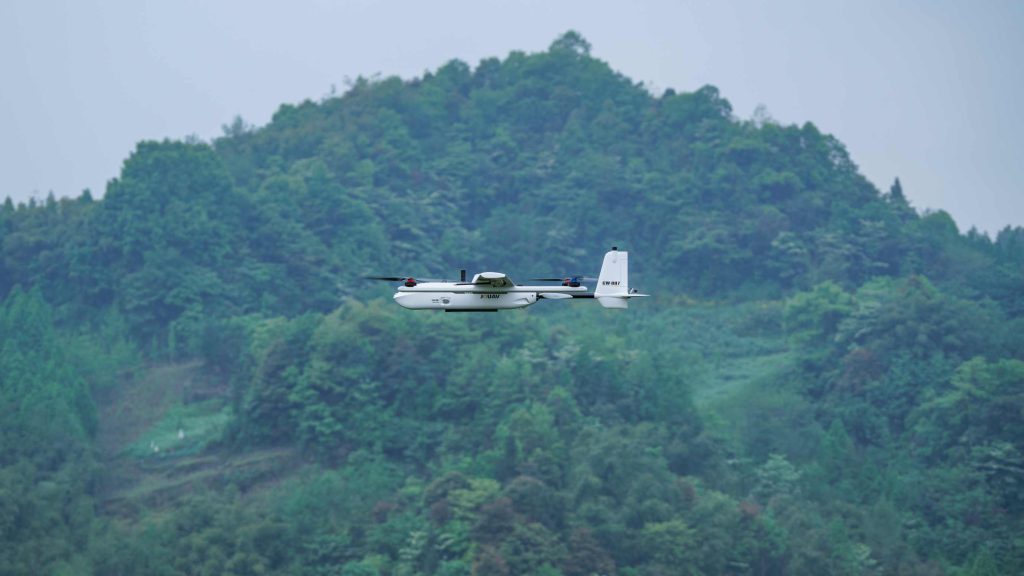
JOUAV CW-15
Designed for aerial surveying and 3D mapping, the CW-15 gives you an impressive flight time of up to 180min and 61km/h cruising speed. With a 3kg payload capability, it supports multiple payload configuration options to meet different mapping applications. Build specifically with surveyors in mind, this drone incorporates the 61MP full-frame camera to give you centimeter-level absolute accuracy on image metadata.
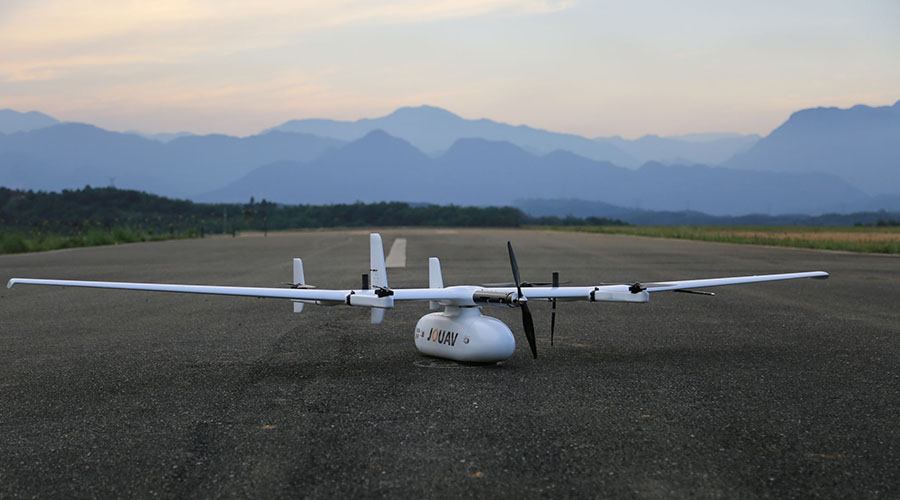
JOUAV CW-25E
JOUAV CW-25E is a gas-powered drone specially designed for large-area missions. This drone has a flight time of 240min, a cruising speed of 72km/h, and a payload of 6kg. This RTK mapping drone can be equipped with the JoLiDAR-LR22S LiDAR sensor, offering incredibly high-resolution dense point clouds. The CW-25E has been used for powerline inspection, land mapping, highway construction surveying, etc.
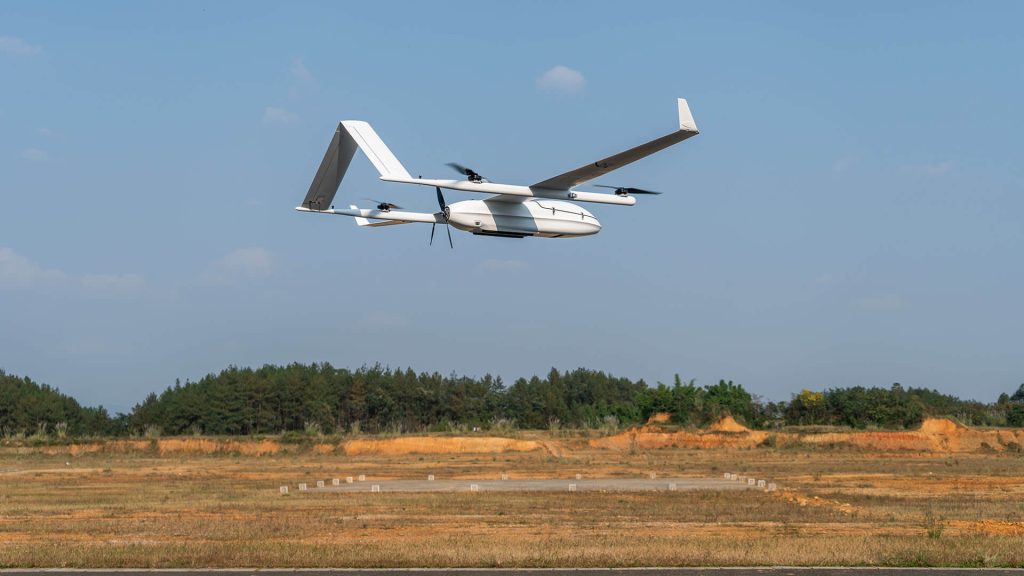
JOUAV CW-30E
Available in gasoline and heavy fuel-powered models, the JOUAV CW-30E is specifically designed for land or sea operations with high precision and large-area aerial applications. Equipped with the RIEGL VUX-240 LiDAR sensor, this drone can achieve 1.2cm (0.47in) full-color sharpened ground resolution at 60m (200ft). This resolution makes it possible to create more precise 3D models and mesh that help benefit a variety of industries, such as vegetation research, livestock management, and forest conservation.
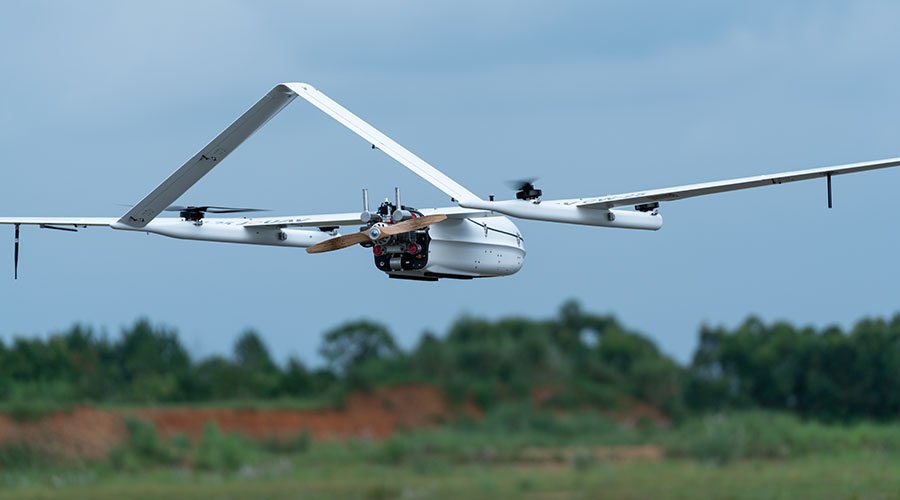
RTK drone FAQ
What's the RTK survey?
As a surveying technique, the RTK survey uses a real-time kinematic GPS receiver to provide centimeter-level accuracy. It is used in surveying and construction to obtain the most accurate position and elevation data.
Does an RTK drone need a base station?
Yes, it is still recommended to use some ground control points to ensure the accuracy of your project, even if you are using PPK or RTK on the drone.
How much does an RTK drone cost?
On average, the RTK drone price ranges from $10,000 to $100,000 depending on their functions and types.
Is RTK better than DGPS?
Yes, RTK functions in the same way as DGPS, but they also have additional calculations in the data processing phase to correct for ionospheric delays and satellite clock errors that exist in DGPS.



